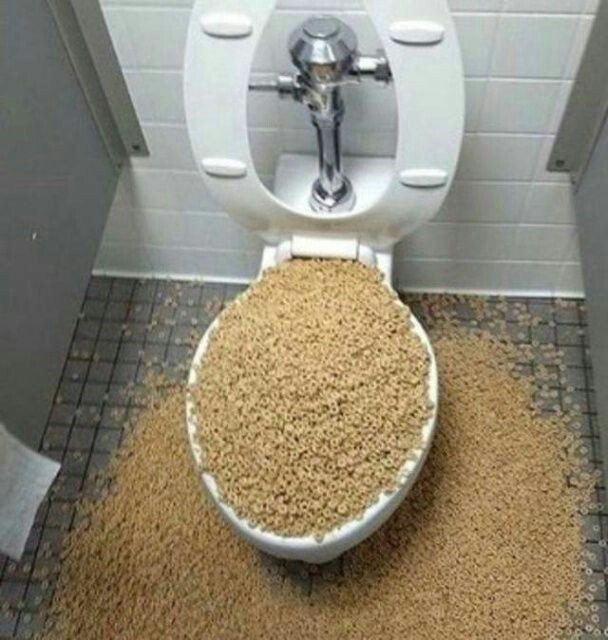Are You Capable to Flush Food in the Toilet?
Are You Capable to Flush Food in the Toilet?
Blog Article
We've discovered this great article relating to Think Twice Before Flushing Food Down Your Toilet below on the net and believe it made sense to write about it with you on this site.

Introduction
Many people are usually faced with the problem of what to do with food waste, specifically when it involves leftovers or scraps. One typical question that develops is whether it's fine to purge food down the commode. In this post, we'll delve into the reasons people may consider purging food, the repercussions of doing so, and alternate methods for appropriate disposal.
Reasons people might take into consideration flushing food
Lack of understanding
Some individuals might not recognize the potential harm brought on by flushing food down the toilet. They may erroneously believe that it's a safe method.
Benefit
Flushing food down the commode might seem like a quick and simple option to disposing of undesirable scraps, especially when there's no nearby trash bin available.
Idleness
In many cases, people might merely pick to flush food out of large negligence, without thinking about the effects of their activities.
Repercussions of flushing food down the toilet
Environmental effect
Food waste that ends up in rivers can add to pollution and damage water ecological communities. Additionally, the water utilized to flush food can strain water sources.
Pipes issues
Purging food can lead to stopped up pipelines and drains, triggering expensive plumbing fixings and hassles.
Sorts of food that should not be flushed
Fibrous foods
Foods with fibrous appearances such as celery or corn husks can get entangled in pipelines and create obstructions.
Starchy foods
Starchy foods like pasta and rice can take in water and swell, bring about blockages in pipes.
Oils and fats
Greasy foods like bacon or food preparation oils need to never ever be purged down the toilet as they can solidify and trigger blockages.
Correct disposal techniques for food waste
Using a garbage disposal
For homes geared up with garbage disposals, food scraps can be ground up and purged through the pipes system. Nonetheless, not all foods appropriate for disposal in this way.
Recycling
Certain food packaging materials can be recycled, minimizing waste and reducing environmental impact.
Composting
Composting is an environment-friendly means to deal with food waste. Organic materials can be composted and used to enhance dirt for horticulture.
The importance of proper waste administration
Reducing ecological damage
Proper waste monitoring methods, such as composting and recycling, help minimize air pollution and maintain natural resources for future generations.
Securing plumbing systems
By avoiding the practice of flushing food down the toilet, home owners can avoid costly pipes repair services and preserve the integrity of their plumbing systems.
Verdict
Finally, while it may be alluring to purge food down the toilet for ease, it is necessary to recognize the prospective consequences of this action. By taking on appropriate waste monitoring practices and getting rid of food waste sensibly, people can add to much healthier pipes systems and a cleaner setting for all.
FLUSH FOOD DOWN THE TOILET?
FLUSHING FOOD CAN CAUSE BLOCKED DRAINS IN YOUR HOME
All of the plumbing fixtures in your home are connected to the same sewer pipe outside of your home. This outdoor sewer pipe is responsible for transporting all the wastewater from your home to the Council sewer mains. Even small pieces of food that go down the kitchen sink can cause problems for your sewer. It should therefore be obvious that flushing larger bits of food, such as meat, risks a clog in either the toilet itself or the sewer pipes. Flushing greasy food is even more problematic because oil coagulates when it cools, coating the interior lining of your pipes.
THE TOILET IS NOT A BIN
Food isn’t the only thing that people shouldn’t be flushing down the toilet. People use the toilet to dispose of all kinds of things such as tampons, makeup wipes, dental floss, kitty litter and even underwear. Water goes to great lengths to educate residents about the high costs and stress placed on wastewater treatment systems simply from people flushing the wrong stuff down the toilet. It costs taxpayers millions of dollars each year, and homeowners thousands in blocked drain repairs.
FLUSHING FOOD IS A WASTE OF WATER
Flushing food is a waste of our most precious resource - water. In June this year Level 1 water restrictions were introduced to protect water supply from drought conditions. Much of New South Wales continues to be affected by prolonged drought with recent figures revealing up to 97 per cent of the state remains in drought. Depending on whether you have a single or dual flush toilet, every single flush uses between five and 11 litres of water. In the current climate this is a huge amount of water to be wasting on flushing food that should be placed in the bin (or better yet, the compost).
https://www.jabplumbingsolutions.com.au/blog/can-you-flush-food-down-the-toilet

I'm very involved in Think Twice Before Flushing Food Down Your Toilet and I am praying you enjoyed the blog post. Sharing is nice. Helping others is fun. Thank you so much for your time spent reading it.
Book Today Report this page